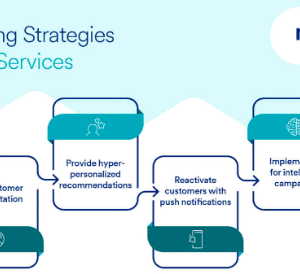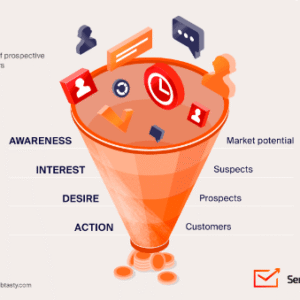Introduction: Why this matters and why you should care
Alright, imagine this: you fire up an AI logo maker, tweak a few sliders, and out pops a slick emblem and a quirky business name that makes you say, “Yes—that’s the vibe.” You feel like a creative genius, right? But then you pause and wonder, can AI logos be trademarked UAE? Who owns the design, and will the UAE trademark office even accept an AI generated logo trademark UAE application that lists an AI as the creator? I’ve been in this weird space for a while, testing brand ability tools, filing trademark searches, and chatting with lawyers in the Gulf, so I get the curiosity and the low-grade panic that follows it. Let’s be honest: most founders don’t want a lecture about intellectual property; they want to know whether they can lock down their shiny new brand without drama. So here’s a friendly, slightly cheeky, and very practical walk-through of how AI generated business names trademark UAE and trademark AI logo UAE issues play out under UAE principles and practical realities. I’ll explain what matters for trademark eligibility AI names UAE, what to watch for when you try to register AI logo UAE, and what “ownership” even means when a machine helped do the heavy lifting. Ever wondered why certain AI outputs feel unclaimable or why some lawyers get twitchy? We’ll cover that, along with real-world tips you can use immediately. FYI, I’ll throw in my own annoyingly strong preferences about naming clarity and uniqueness—because IMO, half the time the tech gives you fireworks and zero trademark defensibility. Ready? 🙂
Section 1: The legal landscape in the UAE — basics you need to know
Let’s keep this simple: the UAE follows a trademark system built around the idea of distinctiveness and use. If a logo or name clearly identifies your goods or services and doesn’t clash with existing marks, you stand a chance of registration. But now plug AI into that formula and complexity rises: UAE trademark AI-created designs present questions about authorship, originality, and whether a generated mark is “created” by a human who can claim rights. The UAE law focuses on who uses and claims the mark in commerce rather than the exact creative process, which helps, but it doesn’t erase issues. You need to ensure the mark is distinctive, non-deceptive, and not confusingly similar to pre-existing marks in the UAE register. Trademark examiners will still apply the same substantive tests they always used, so if your AI-generated name looks too generic (think “BlueShirt AI”), it will flunk the distinctiveness test. What about intellectual property AI logos UAE? That’s where contracts and provenance matter: if you used an AI tool under terms that assign full rights to you, you can more confidently claim ownership when you register AI logo UAE. If the T&Cs leave the rights ambiguous, you create a vulnerability: someone could argue the platform or another user has a claim. So the solution is boring but effective—read terms, keep records of prompts, and prefer services that grant you exclusive commercial rights. Ever ask whether the UAE recognises AI as an “author”? Not really; the law still looks to natural persons or legal entities for ownership claims, so you want to be the claiming party, not the algorithm. Bold takeaway: distinctiveness and clear ownership documentation matter more than whether AI helped design the mark.
Section 2: Can AI really create original marks? Spoiler: it depends
Let’s get to the heart of the matter—can AI logos be trademarked UAE if the AI essentially remixes existing imagery and names? The short answer: yes, but with caveats. AI systems often generate content by training on massive datasets that include copyrighted works, so originality can be murky. Trademark offices don’t require the same originality standard as copyright law, but they do insist on distinctiveness and non-confusion. If your AI generated logos trademark UAE submission looks like a mash-up of known brands, examiners or opposing parties can challenge you on likelihood of confusion. What helps? Two things: first, make sure the mark’s design and name are sufficiently unique compared to existing UAE marks; second, gather proof that you instructed and supervised the AI—save prompts, iterations, and timestamps. These records won’t magically make an AI output novel, but they establish your human-driven contribution and intent to use the mark commercially, which examiners value when assessing trademark eligibility AI names UAE. Also ask yourself: did you use stock elements or public-domain vectors? If yes, you must ensure those elements didn’t already carry third-party rights. Lastly, a practical tip: run a thorough clearance search for both visual and phonetic similarities before filing. I’ve seen founders fall in love with an AI name, only to find a near-identical mark in the same class that kills their hopes. So yes, AI can get you a registrable mark, but don’t treat it like some magical “ownership guarantee” button.
Section 3: Ownership — who’s the legal owner of an AI-created logo or name?
Ownership feels like a philosophical rabbit hole, but here’s the practical route: in the UAE, you must present a natural person or a legal entity as the owner when filing a trademark application. That means you cannot list “the AI” as the owner — shocking, I know. If you used an AI tool to create a logo or chosen an AI-suggested name, you need documentation showing that you (or your company) hold the rights to use and commercialize the output. This is where AI logo ownership UAE becomes an exercise in paperwork and contracts. If the AI platform’s terms explicitly assign full commercial rights to users, you can claim ownership more confidently when you register AI logo UAE. If the platform retains rights or allows reuse, your claim weakens and may invite oppositions. Practical checklist to protect ownership:
- Save prompts, timestamps, and version history as proof you directed the creative process.
- Keep the AI platform’s terms and conditions showing the rights granted to you.
- Use a written assignment or agreement if someone else (a freelancer or agency) runs the AI and hands you files.
- Consider registering the mark in the company name rather than a founder’s personal name for commercial clarity. I always tell clients: don’t rely on “I designed it with an AI” as your sole ownership proof. Treat it like a collaboration where you consciously made decisions and documented them. That documentation supports trademark law AI UAE arguments about who the author/owner is and shows your intent to use the mark in commerce, which examiners and courts take seriously.
Section 4: Clearance and search strategies — don’t skip this step
If you love a logo or name, I get it—rush-to-file energy is real. But the smartest move before you go headlong into AI generated business names trademark UAE filing is a solid clearance search. Clearance isn’t glamorous, but it saves you from nasty oppositions and wasted filings. Here’s how I run a pragmatic search that fits UAE realities:
- Start with the UAE trademark database to find identical or confusingly similar marks in the relevant classes.
- Do a visual search for logos; AI outputs can be similar in shape or motif even if the text differs.
- Search phonetic and transliteration variants for names; Arabic transliteration can create surprising conflicts.
- Check domain name availability and social handles to ensure brand consistency.
- Review international marks if you plan to expand into the Gulf region—regional owners may object. Why does this matter? Because trademark AI logo UAE issues often hinge not on whether the design feels original but on whether existing rights conflict. If a competitor has a registered mark with the same visual impression, you might face refusal or even cancellation proceedings. Also, clearance helps you evaluate trademark eligibility AI names UAE from a practical risk perspective—some names are technically registrable but commercially suicidal because of likely disputes. My favorite sneaky tip: run reverse image searches on any AI-generated components to spot reused stock vectors. You’d be amazed how many supposedly “unique” AI logos reuse public elements. Bottom line: do the hard work up front, document everything, and use the search results to shape a filing strategy that reduces opposition risk.
Section 5: Filing tactics — how to improve chances with the UAE authorities
Okay, you’ve run searches and documented ownership. Now what? Filing strategy matters. The UAE accepts applications under specific classes, and examiners focus on distinctiveness, descriptiveness, and likelihood of confusion. To boost your odds with trademark AI-created designs UAE, follow these tactics:
- File under the correct Nice class and include accurate goods/services descriptions; overly broad descriptions invite objections.
- Use a clear specimen or mock-up showing real intended use; examiners like evidence of genuine commercial intent.
- Consider filing both word and figurative (logo) marks separately when the AI-generated logo includes a word element you care about. This gives you flexibility when enforcing rights.
- If you plan regional rollout, think about filing in nearby jurisdictions early to deter copycats.
- Keep prompt records and platform T&Cs handy as supplementary documentation in case questions about authorship arise. Why separate filings? Because if someone challenges the logo but not the word mark, you still keep partial rights. Also, when examiners review trademark eligibility AI names UAE, a clean, distinct word mark often faces fewer hurdles than a busy AI-generated emblem that looks like three other tech brands. One more practical move: if the AI-derived design includes generic or widely used icons, tweak or add unique elements before filing to increase distinctiveness. I always tell clients to think like an examiner: ask whether this mark would cause confusion for a consumer glancing at a storefront. If the answer is “maybe,” refine the design.
Section 6: Oppositions, cancellations, and enforcement — what to expect
Let’s be blunt: filing is half the battle; defending the mark is the other half. When you register an AI generated logos trademark UAE, expect that competitors, brand owners, or other stakeholders might oppose or file for cancellation if they see similarity. Oppositions most commonly allege prior rights or likelihood of confusion. To prepare:
- Keep records of first use and continuous commercial use.
- Maintain evidence of marketing, sales, packaging, and online presence showing real brand deployment.
- If challenged, rely on distinctiveness, acquired distinctiveness through use, or differences in goods/services to argue against confusion.
- Engage local counsel who understands the UAE’s procedural norms and can push for early resolution when needed. Enforcement also means policing the market—monitor online marketplaces and domain registrations for infringing uses. If you find copycats, send takedown notices, and escalate to cease-and-desist letters or enforcement actions where necessary. Remember that intellectual property AI logos UAE disputes can be won or lost on nuance: two logos can differ in small but decisive ways, and those differences matter. Practical example: I once saw an AI logo that used an abstract flame icon and a word that differed slightly; the owner survived a challenge by proving the overall commercial impressions diverged. That’s why evidence of independent branding decisions, prompt histories, and marketing use can make or break enforcement. So yes, register, but don’t treat registration like a magical shield — be ready to defend.
Section 7: Practical tips for using AI tools responsibly (so your trademark stands a chance)
If you plan to rely heavily on generators for names and logos, do it smart. AI is powerful, but it doesn’t absolve you from basic brand hygiene. Here’s a practical playbook for creating AI outputs that actually work for trademark eligibility AI names UAE:
- Use AI as a creative starter, not a final decision-maker; iterate and humanize the output.
- Modify AI-suggested elements to add uniqueness—change shapes, fonts, or colors and add bespoke elements.
- Prefer platforms that grant clear commercial rights and keep terms that assign IP to the user.
- Save prompts, iterations, and export timestamps as a “creative log” to prove authorship and decision-making.
- Run multi-channel clearance: trademark register, domain, social handles, and visual similarity checks. A small anecdote: I once advised a client who loved an AI-generated bird mark.





